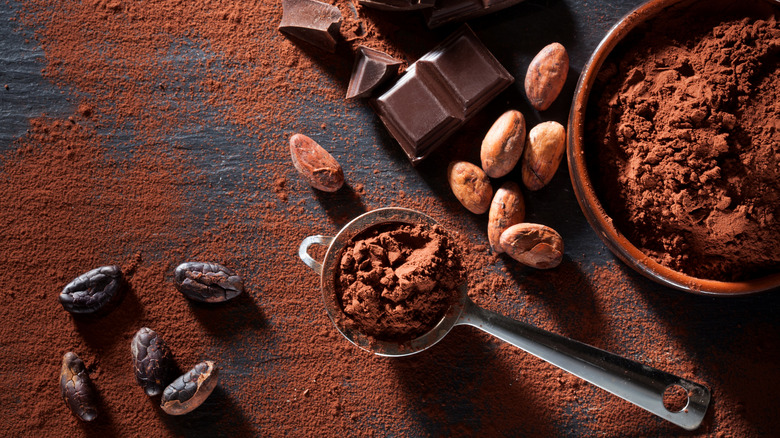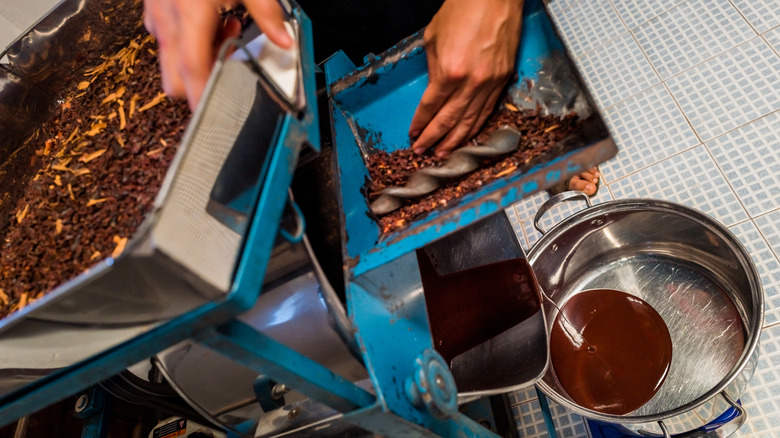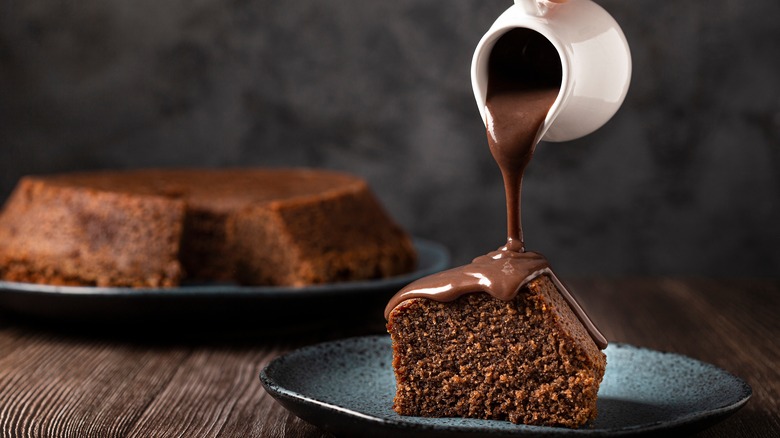Why Cocoa Percentage Is Important When Cooking With Chocolate
One of the first things you notice on the label of a chocolate bar these days is a number, often in a prominent bold font and hard to miss when staring down your array of options at the grocery store. This number doesn't refer to calories or price but to the percentage of cocoa the bar contains. More specifically, the number describes how much of the chocolate actually came directly from cacao beans.
From creamy 33% milk chocolate-peanut butter blends or 55% dark chocolate raspberry, all the way to intense 72% bars of bliss, the variety of chocolate available seems to grow constantly. When it comes to late-night bites or a shared movie theater snack, your selection really comes down to personal preference. But cooking requires a slightly more calculated approach as far as cacao percentage is concerned. From a favorite chocolate birthday cake to ganache-topped delicacies, delicious baked goods often call for specific types of chocolate in the recipe — so keep your pantry prepared by having a variety on hand.
The science of sweetness
While we know that chocolate doesn't exactly grow on trees, it can definitely trace its heritage back to the forests. Cacao pods themselves are still harvested from the trees by hand and contain beans used to produce the many varieties of chocolate beloved by the world.
The cocoa bean has two basic components: the solid (the liquor) and the fat (cocoa butter). Chocolate liquor (not to be confused with liqueur) is actually a paste that is extracted through a process of grinding the beans, which causes the cocoa butter to liquefy and create the liquor. That liquor is separated and formed into bars of unsweetened chocolate.
The cocoa butter that melts in the extraction process is typically blended with cream and sugar at different ratios as it is prepared for consumers in the chocolate-making process. That percentage you see on the label varies based on that ratio: The less fat and sweetness, the higher the percentage of cocoa liquor from the cacao bean itself (via Ecole Chocolat). All of this information is efficiently packed into a convenient percentage for buyers.
Choosing the right chocolate for the job
While chocolate is much more than just a number, keeping its percentage in mind when cooking with cocoa should be a priority. Different percentages offer a wide range of sweetness levels. Typically, the higher the cocoa percentage, the less sweet the chocolate tastes, but product quality can also come into play.
The percentage of cacao is also key when it comes to the texture of the end product, which is, naturally, quite important in the kitchen. Numbers near 60% tend to be very versatile when it comes to baking, according to Cook's Illustrated, but even a few percentage points below or above can affect the consistency in something like a custard or pudding. When it comes to a rich sauce or ganache, the chocolate of choice may be closer to 70%, but sometimes this means adding a little more liquid to the mixture to get the perfect thickness. The Ledger explains that getting just the right balance can be challenging — but it also provides a creative opportunity for those who like to experiment in the kitchen.


